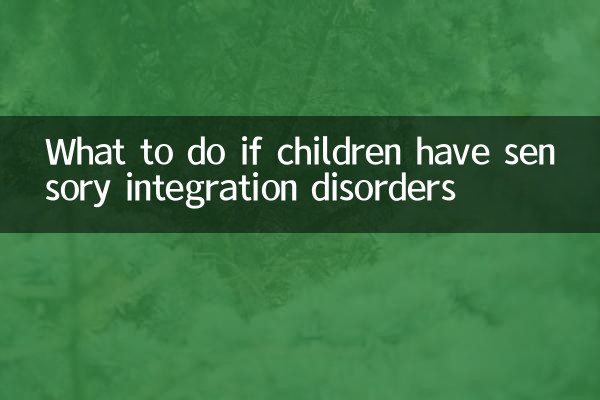What to do if children have sensory integration disorders
In recent years, children's sensory integration disorders (sensory integration disorders) have become a hot topic of concern to parents and educators. Sensory integration disorder refers to children's difficulties in receiving, processing and responding to sensory information, which may affect their learning, behavior and social abilities. This article will combine the hot discussions on the Internet in the past 10 days to provide you with structured data and suggestions to help parents better deal with this problem.
1. What is sensory integration disorder?

Sensory integration disorder means that a child's sensory systems (such as touch, hearing, vision, vestibular sense, and proprioception) cannot be effectively integrated, resulting in behavioral or emotional problems. Common manifestations include:
| Performance type | specific symptoms |
|---|---|
| tactile sensitivity | Resistant to being touched, dressing or bathing |
| vestibular disorder | Poor balance ability, restlessness or fear of exercise |
| proprioception disorder | Clumsy movements and poor strength control |
| hearing sensitivity | Overreaction to certain sounds |
2. Analysis of the causes of sensory integration disorders
According to recent research and discussion, causes of sensory integration disorders may include:
| Type of cause | Specific instructions |
|---|---|
| genetic factors | Have a similar medical history in your family |
| pregnancy problems | Premature birth, hypoxia, etc. |
| environmental factors | Lack of adequate sensory stimulation |
| parenting style | Overprotection or restriction of activities |
3. How to improve sensory integration disorders?
For sensory integration disorders, parents can take the following intervention measures:
| intervention methods | Specific operations |
|---|---|
| tactile training | Use items of different materials (such as sand, brushes) to stimulate the skin |
| Vestibular sense training | Swings, trampolines, balance beams and other sports |
| Proprioception training | Strength activities such as climbing, pushing and pulling heavy objects |
| auditory training | Play soothing music or play a sound identification game |
4. Frequently Asked Questions for Parents
Combined with popular discussions across the Internet, the following are some of the issues parents are most concerned about:
1. Can sensory integration disorders be cured on their own?
Mild sensory disorders may improve with age, but moderate to severe disorders require professional intervention.
2. Do you need medical treatment?
If it affects daily life, it is recommended to consult a pediatrician or sensory trainer.
3. How long does it take for home training to be effective?
It usually takes 3-6 months of continuous training, and individual differences are large.
5. Recommended popular resources across the entire network
According to search data in the past 10 days, the following resources have attracted much attention:
| Resource type | Recommended content |
|---|---|
| books | "Complete Book of Sensory Integration Games" and "Children's Sensory Integration Training Manual" |
| video course | A certain platform "Family Sensory Integration Training 28-Day Plan" |
| APP tools | "Sensory Integration Training Assistant" (providing daily training plans) |
Conclusion
Sensory integration disorder is not an irreversible problem. Through scientific training and patient guidance, most children can be significantly improved. Parents should avoid excessive anxiety, actively seek professional support, and at the same time create a rich sensory experience environment to help their children grow up healthily.

check the details

check the details